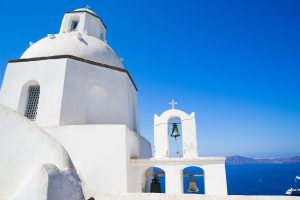What is the history of the Eastern Orthodox Church?
 |
| Image from pixabay |
Introduction
The Eastern Orthodox Church, also known as the Orthodox Catholic Church, is one of the oldest Christian denominations in the world. With its roots tracing back to the early Christian community of Byzantium (later Constantinople), the Eastern Orthodox Church has played a significant role in shaping the history and culture of Eastern Europe and beyond. In this article, we will delve into the rich history of the Eastern Orthodox Church, exploring its origins, development, key events, and doctrines.
1. Early Origins
The origins of the Eastern Orthodox Church can be traced back to the first-century Christian community founded by the apostles and their disciples. As Christianity spread, the city of Byzantium emerged as an important center, both politically and religiously. In 330 CE, the Roman Emperor Constantine the Great established Constantinople (present-day Istanbul) as the new capital of the Roman Empire, which became a significant milestone in the history of the Eastern Orthodox Church.
2. Schism of 1054
One of the most significant events in the history of the Eastern Orthodox Church is the Great Schism of 1054. This event marked the formal split between the Eastern Orthodox Church and the Western Roman Catholic Church, leading to the formation of two distinct branches of Christianity.
The primary reasons for the schism were theological, cultural, and political differences between the churches in the East and West. Doctrinal disagreements, such as the use of leavened bread in the Eucharist and the role of the Pope, played a crucial role in the division.
Since the schism, the Eastern Orthodox Church has developed its unique traditions, liturgical practices, and ecclesiastical structure, separate from the Roman Catholic Church.
3. Byzantine Empire and Orthodox Influence
The Byzantine Empire, with its capital in Constantinople, played a significant role in the development and spread of Eastern Orthodox Christianity. The Byzantine emperors regarded themselves as the defenders of Orthodoxy and exercised considerable influence over religious affairs.
During the Byzantine era, magnificent churches and monasteries were built, such as the Hagia Sophia, which became a symbol of the Eastern Orthodox faith. Byzantine theologians and scholars, including John Chrysostom and Gregory Palamas, made substantial contributions to theology and spirituality, shaping the Eastern Orthodox tradition.
4. Iconoclasm Controversy
One of the major controversies in the history of the Eastern Orthodox Church was the Iconoclasm Controversy that lasted from the 8th to the 9th century. Iconoclasm, meaning “image-breaking,” was a movement that condemned the use and veneration of religious images, particularly icons, within the Church.
This controversy divided the Byzantine Empire and the Church, as some emperors supported the iconoclasts while others defended the use of icons. The final triumph of the iconodules, those who supported the use of icons, in 843 CE marked a turning point, as the veneration of icons became an integral part of Eastern Orthodox worship and spirituality.
5. Expansion and Influence
As the Byzantine Empire
expanded, so did the influence of the Eastern Orthodox Church. Missionaries and theologians traveled to various regions, spreading the Christian faith and establishing new churches.
The Slavic nations, such as Russia, Bulgaria, and Serbia, embraced Eastern Orthodoxy, which became a fundamental element of their cultural identity. The Eastern Orthodox Church played a crucial role in the conversion of these nations and the formation of their distinct Orthodox traditions.
6. Ottoman Rule and Modern Challenges
In 1453, the Byzantine Empire fell to the Ottoman Turks, and Constantinople was renamed Istanbul. Under Ottoman rule, the Eastern Orthodox Church faced significant challenges and restrictions, but it managed to survive and preserve its traditions.
In modern times, the Eastern Orthodox Church has faced various challenges, including political changes, secularization, and religious pluralism. However, it continues to be a vibrant and influential religious institution, with millions of adherents around the world.
Conclusion
The history of the Eastern Orthodox Church is a fascinating journey through centuries of faith, culture, and spiritual development. From its early origins in Byzantium to the schism of 1054, from the Byzantine Empire to its expansion into Slavic nations, the Eastern Orthodox Church has left an indelible mark on the world.
Today, the Eastern Orthodox Church remains a vibrant and enduring religious institution, carrying forward the ancient traditions, liturgies, and teachings of its early founders. Its influence extends far beyond its geographical boundaries, impacting the lives of millions of believers and contributing to the rich tapestry of global Christianity.
